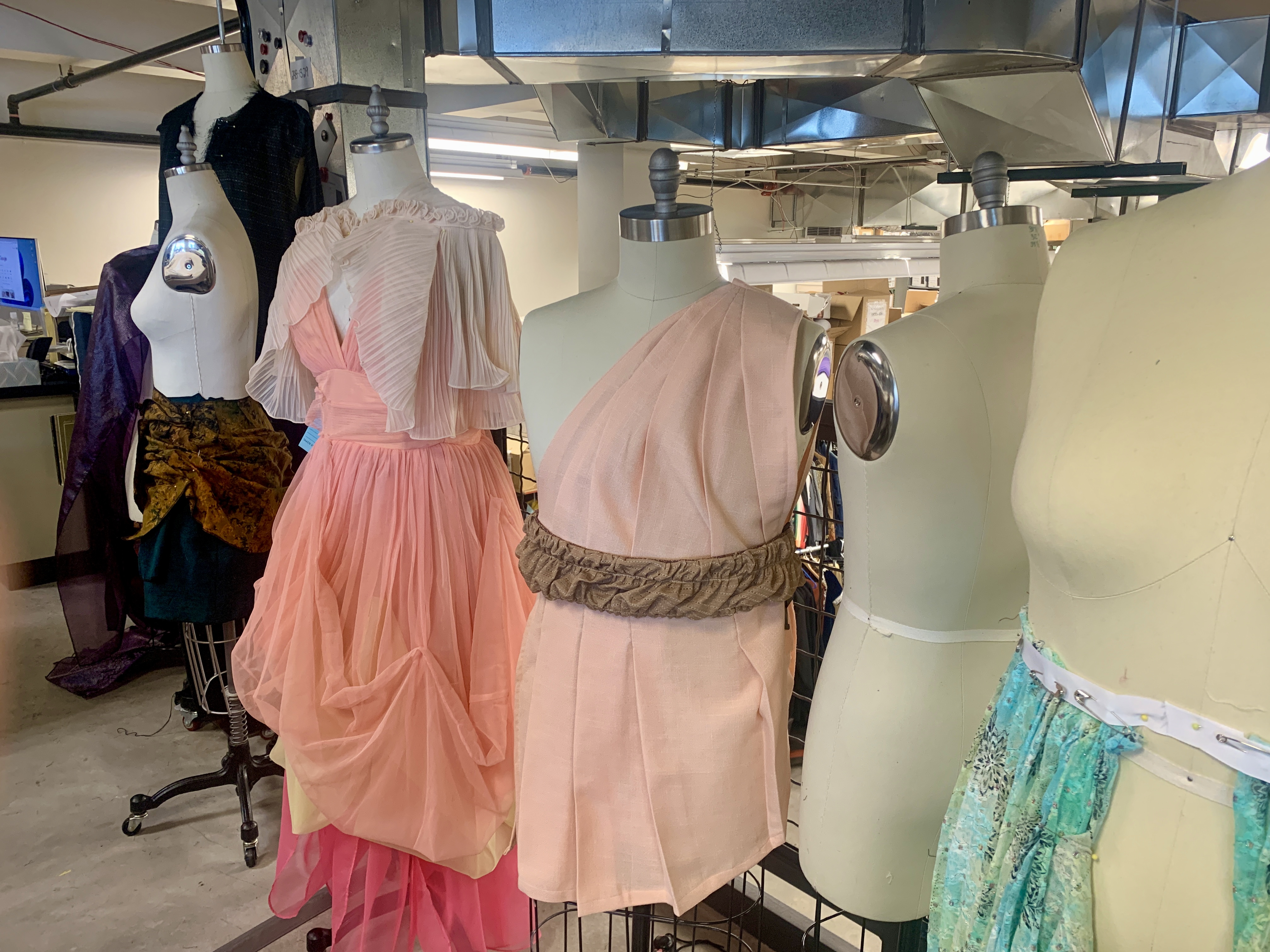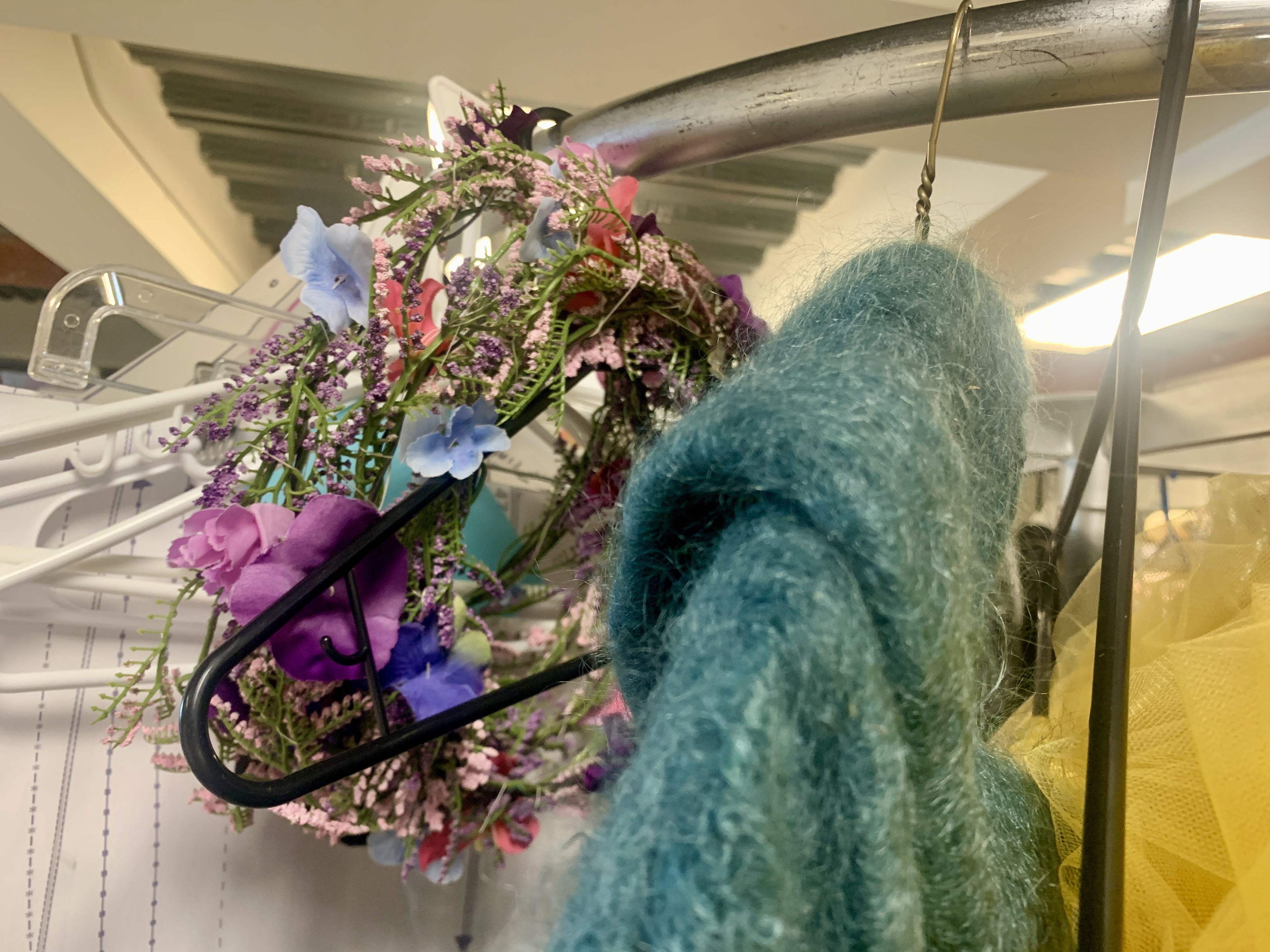A Midsummer Night's Dream features the designs of two student designers and faculty mentor
William Shakespeare’s A Midsummer Night’s Dream opens on April 13 in the Robinson Theatre and the play features the work of three costume designers.
The theatre department's costuming program had two students this season who were interested in the opportunity to design for a major play. However, with all of the projects and responsibilities that come with being a senior theatre major, neither was able to take on the task of designing for such a large show on their own. The design process has also been shorter than most for the show so a division of labor seemed imperative. Fortunately, A Midsummer Night’s Dream breaks naturally into four character groups that exist in different but related worlds. Associate Professor of Theatre and Costume Shop Manager Jill Van Brussel was able to assign a character group to each student designer based on their aesthetics and design strengths as well as taking on two of the character groups herself.
Rachel Foote is designing the costumes for the Rustics (also called the Mechanicals). Foote enjoys working with texture and character details so the Rustics, who are comedically specific, were the best fit for her interests.
“I’ve been focusing on matte finishes and a found-materials look," explained Foote. "I’ve also, for comic effect, added intentional anachronisms such as zippers, cookware and one cleverly placed feather boa."
L Knight is designing all of the costumes for the fairy realm.
“My designs tend to be fantastical and explosive so I was jumping at the chance to design the fairy world,” Knight said.
Van Brussel is designing the Royals and Lovers costumes as well as overseeing the process of making sure the individual designs work together. To that end, the three designers established a shared color palette and determined that all would incorporate elements of Classical Greek historical dress. With that as a central point, they were each able to explore different approaches to those ideas. The process involves a lot of collaborative feedback.
“The director, Ben Reigel, provided us with fabulous phrase for the world he wanted to create: ‘idealized Greek pastoral meets Mel Brooks’ ancestors at a surrealist moonlight party.’ I really couldn’t improve on that,” said Van Brussel. “He also shared gorgeous images from artist Maxfield Parrish that spoke volumes about the romanticism and luminosity he wanted for this world. They have been our guiding images.”
Van Brussel’s design process starts with research — first of the script, the characters, choice of historical setting and the artistic references provided by the director. She then creates mood boards before proceeding to rough sketches, final renderings and then building the pieces. Foote spends the majority of her design time in the sketch phase by continually editing down her ideas through trial and error. For her, this is the most enjoyable part of the process.
“My design process starts with a Pinterest rabbit hole," said Knight. "First looking for things that simply catch my eye, then searching things the director mentioned, and finally what’s in between what I like and what the director would like. All the images get put into a presentation to show the production team.”
Costumes in a play production are instrumental in reinforcing tone and time period and for this show in particular, they are the most concrete visual element the design team has to convey their message.
“They also provide context to the heightened language of Shakespeare, giving indications of character that might otherwise be lost,” said Foote.
Knight was able to try out new techniques for constructing costumes during this process which was exciting. However, the truncated timeline was definitely a challenge as “I had to think ten steps ahead for our sewers.”
“The fabric is flying!” said Van Brussel.
For Foote, who is working on this show just on the heels of designing costumes for Floyd Collins, the challenge was in the complete 180 degree turn in visual style.
“I had become comfortable in a world of layers and textures and a neutral color palette and then had to make a hard shift into simplicity and bright colors,” said Foote. “Neither is more difficult than the other but the mental gymnastics of switching quickly was a hurdle.”
“I am always surprised and delighted to see what our students come up with. They see and dream things that I never would,” said Van Brussel. As for the quick design process? “Out of exquisite pressure, magic emerges!”
The costumes created by Van Brussel and her talented team of students will be one of many elements of the show that immerse audiences in the world of Shakespeare. But for those wondering — what is A Midsummer Night’s Dream about?
“Love is confounding and often makes us ridiculous,” said Van Brussel. “But it’s always worth it in the end.”
A Midsummer Night’s Dream will be presented in the Moss Performing Arts Center Robinson Theatre April 13-22. Tickets are available online.




